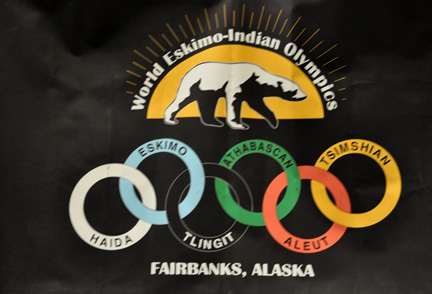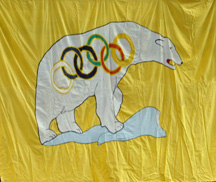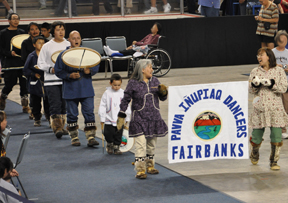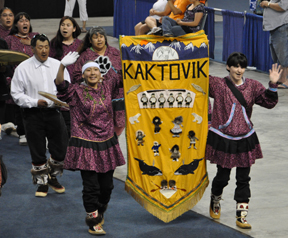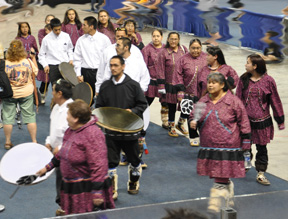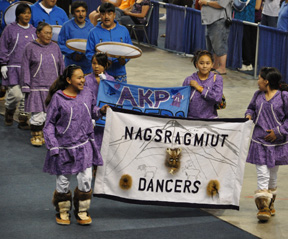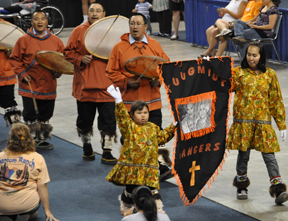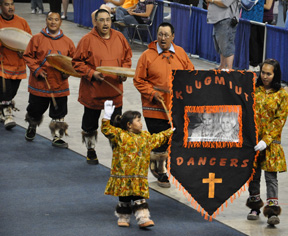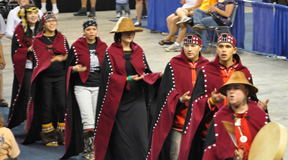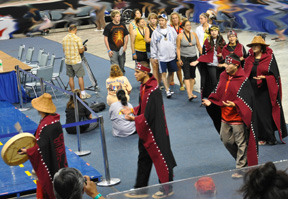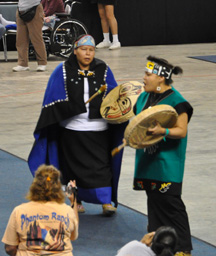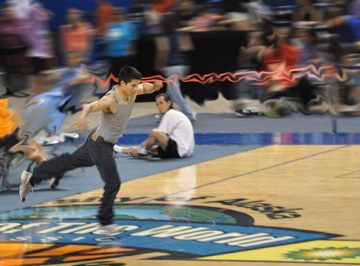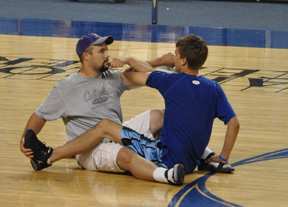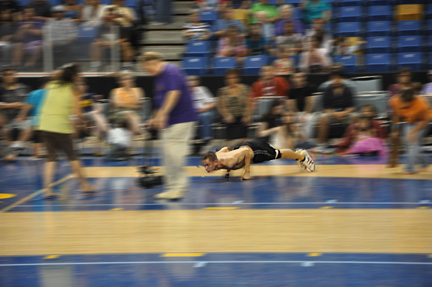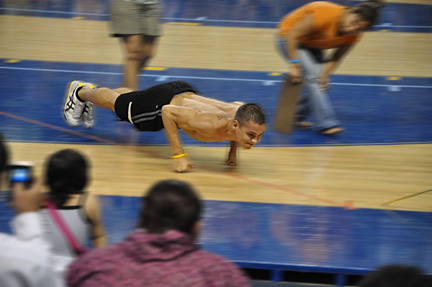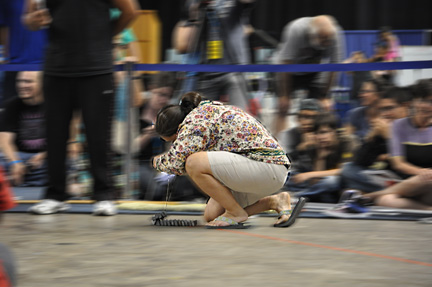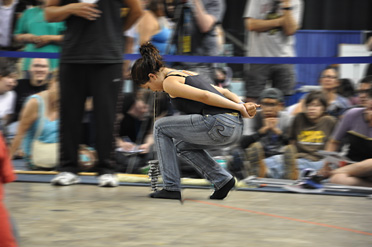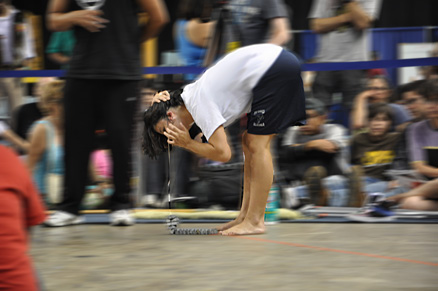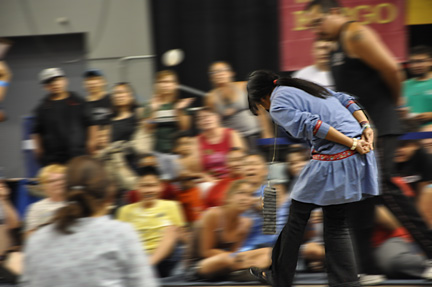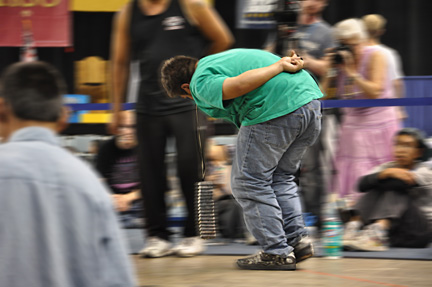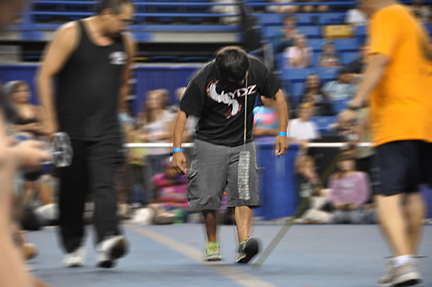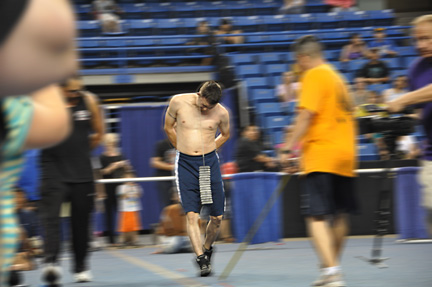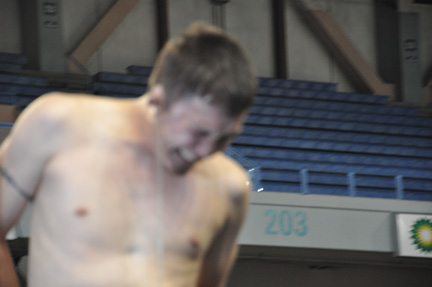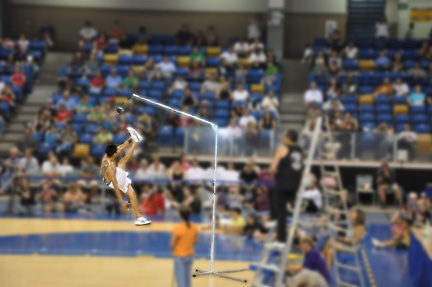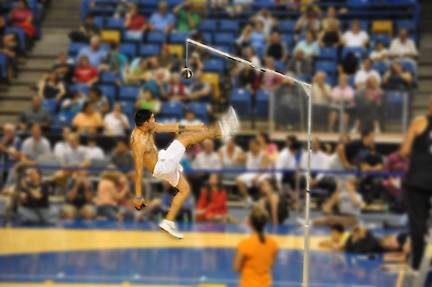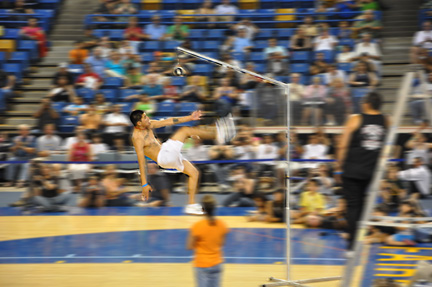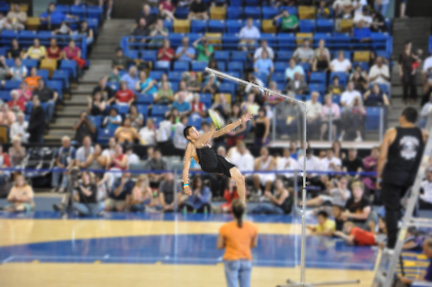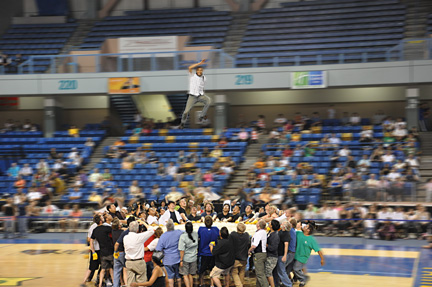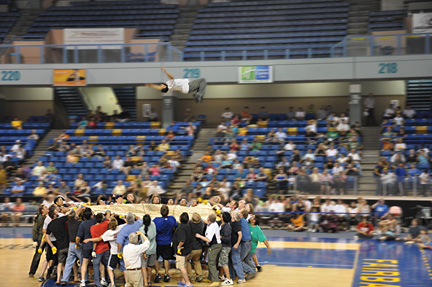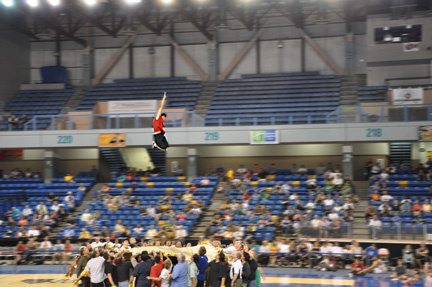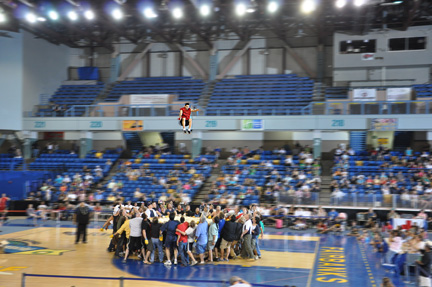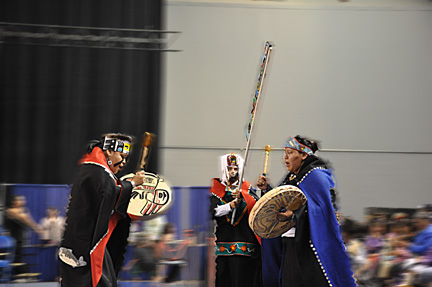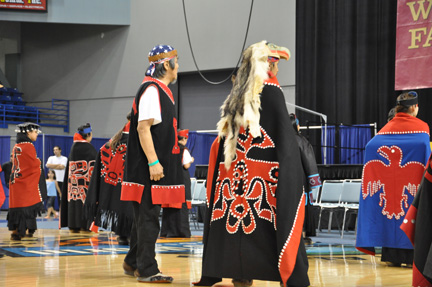| Most events require excellent athletic skills such as the one foot high kick and two foot high kick; plus others that test a persons tolerance for pain such as the ear pull, ear weight and knuckle hop; and some that require finesse such as the blanket toss. |
| Below: Scissor
broad jump demonstration |
|
| Below:
ARM PULL: Two athletes position themselves facing each other so
that their legs are positioned where one leg crosses over the opposite leg
of the other competitor. They then lock arms at the elbows, fists down,
and each begin pulling the other contestant towards them. Two out of three
attempts will declare a winner. After each attempt, the players switch arms
and legs. |
|
| Below:
KNUCKLE HOP OR SEAL HOP: This is a game of
endurance to pain and a testing of strength.
The object is to see how far one can go in a push-up position, with elbows
bent and knuckles down. The only parts of the body touching the floor are
knuckles and toes. From this position, the participant hops forward as far
as possible keeping the back straight and elbows bent. A judge walked alongside
the participant with a camera down by the floor to be sure they do not touch
the floor improperly. |
|
|
| Below: EAR
WEIGHT: The weights used in this event are 16 one-pound lead ingots,
which are threaded through twine. The contestant kneels down, loops the
twine around one ear, puts his/her hands behind his/her back and the stand
straight up, and pack the weight, then go for distance around the
track. Before lead weights were used, sacks such as 25 pounds of flour were
used. Distances of over 2,000 feet are attained. |
|
|
|
|
|
|
| Below: The winner
walked around the area almost three full times and as you can see from his
face, he was in a lot of pain. Later he briefly had an ice pack on his bleeding
ear before competing in other events. |
|
|
| Below: ONE-FOOT
HIGH KICK: The high kick event requires the athlete to jump off
the floor using both feet, kick a suspended object with one foot, and land
on the floor on that same foot demonstrating
balance to the floor officials. Distances the height of a basketball net
is not uncommon. It is supported that when a messenger from a hunting or
whaling crew is within visual distance of the villagers, he will kick high
into the air thereby giving a message that a whale has been shot, or the
caribou are running near. The two-foot high kick means a different but similar
message. The high kicks are considered the premier events of the WEIO. |
|
|
| Below: The man in white trunks below is the
world's record holder from last year. Attempts were made to break the record
this year, but were unsuccessful. |
|
|
| Below: BLANKET
TOSS: Several walrus skins were used for this event. The skin had
holes on the edges so that rope can be looped through all the way around
and used for handle grips. One person gets in the middle of the skin and
stands there while being tossed. With a good coordinated effort on behalf
of the pullers, the person being tossed can get as high as 30 feet in the
air and must land on his feet without falling down. This is quite similar
to a trampoline, with the only difference being that people are the springs
and they can move to catch an errant jumper. The Nalukataq is done in the
whaling communities in the spring if there has been a successful whaling
season. It has been part of the whaling feast activity as long as people
can remember. There are two schools of thought as to why this sport is being
done. One is for the simple exhilaration is provides, and the other is for
spotting game over the horizon. The judges look at balance, height, and
movements in the air. Sometimes you can see jumpers dancing or running in
place and all around form and grace when determining a winner. Sometimes,
flips and somersaults are done to the delight of the pullers and spectators. |
|
|
Below:
It took 40 men (people from the audience) to pull on the blanket. Look
above for the jumper in white, way up high, and below for the jumper in
red, way up high in the air. |
|
|
Below: The dance team winners performed |
|
|
| There were many more games played the day before such as: Indian Stick Pull, Two Foot High Kick, Native Regalia Contest,
Seal Skinning Contest, and Drop the Bomb. Unfortunately, the two RV Gypsies were not in attendance. Movies of these events can be shown to friends of the two RV Gypsies when they return home, if anyone is interested. |
